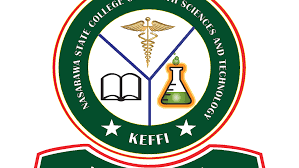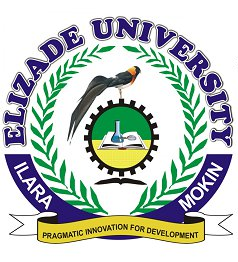Biology Keypoints: Co-ordination and control; Co-ordination and control in living organisms involve the central nervous system, the peripheral nervous system, sense organs, hormonal control, and homeostasis. These mechanisms work together to ensure that organisms respond effectively to internal and external stimuli.
Study other Biology keypoints here
Biology Keypoints: Co-ordination and control
A. Nervous coordination:
i. The central nervous system (CNS) is composed of the brain and spinal cord. The brain is responsible for receiving, interpreting, and integrating information from the sensory organs, while the spinal cord transmits information to and from the brain. The brain is divided into several parts, including the cerebrum, cerebellum, and brainstem. Each part has a specific function, such as controlling movement, perception, and consciousness.
ii. The peripheral nervous system (PNS) consists of the nerves that connect the CNS to the rest of the body. The PNS is further divided into the somatic nervous system (SNS) and the autonomic nervous system (ANS). The SNS controls voluntary movements, while the ANS regulates involuntary actions such as heart rate, digestion, and breathing.
iii. Mechanism of transmission of impulses: The transmission of impulses occurs through the action of neurons. A neuron consists of a cell body, dendrites, and an axon. When a neuron is stimulated, an electrical impulse is generated and transmitted down the axon. The impulse is then transmitted to the next neuron or to an effector cell such as a muscle or gland.
iv. Reflex action is an automatic response to a stimulus that occurs without conscious thought. A reflex arc involves a sensory neuron, an interneuron, and a motor neuron. The sensory neuron detects the stimulus and sends an impulse to the spinal cord, where the interneuron relays the information to the motor neuron. The motor neuron then sends an impulse to the effector cell, causing the reflex action.
B. The sense organs:
i. The skin is a tactile sense organ that detects touch, pressure, temperature, and pain.
ii. The nose is an olfactory sense organ that detects odor molecules in the air.
iii. The tongue is a gustatory sense organ that detects the taste of food.
iv. The eye is a visual sense organ that detects light and color.
v. The ear is an auditory sense organ that detects sound waves.
C. Hormonal control:
i. The animal hormonal system is composed of several glands that secrete hormones into the bloodstream. These glands include the pituitary gland, thyroid gland, parathyroid gland, adrenal gland, pancreas, and gonads. Hormones regulate a variety of physiological processes, including growth, metabolism, and reproduction.
ii. Plant hormones (phytohormones) regulate plant growth and development. These hormones include auxins, gibberellins, cytokinins, abscisic acid, and ethylene.
D. Homeostasis:
i. Body temperature regulation is important for maintaining homeostasis. The hypothalamus in the brain controls body temperature by regulating the production and release of heat.
ii. Salt and water regulation is important for maintaining the balance of fluids in the body. The kidneys play a key role in regulating salt and water balance by filtering waste products and excess fluid from the bloodstream.
In summary, coordination and control in living organisms involve a complex interplay between the nervous system, sense organs, hormonal system, and homeostasis. Understanding these mechanisms is essential for understanding how organisms respond to internal and external stimuli.
A. Structure and function of the central nervous system (CNS):
The CNS consists of the brain and spinal cord. The brain is responsible for receiving, processing, and responding to sensory information, as well as controlling voluntary and involuntary movements. The spinal cord serves as a pathway for the transmission of signals between the brain and the rest of the body. The CNS coordinates various body functions, such as movement, sensation, perception, memory, and emotion.
B. Reflex actions:
Reflex actions are involuntary and automatic responses to stimuli. These actions are mediated by reflex arcs, which involve sensory neurons, interneurons, and motor neurons. Reflex arcs are responsible for important protective functions such as blinking, withdrawal from painful stimuli, and maintaining posture.
C. Sense organs:
The sense organs include the skin, nose, tongue, eye, and ear. These organs detect and process sensory information from the environment and allow the organism to respond appropriately. The skin detects touch, pressure, temperature, and pain. The nose detects odors in the air. The tongue detects taste molecules in food. The eye detects light and color, while the ear detects sound waves.
D. Endocrine glands and hormones:
Endocrine glands are responsible for producing and secreting hormones into the bloodstream. The pituitary gland produces hormones that control growth and development, as well as regulating other endocrine glands. The thyroid gland produces hormones that regulate metabolism. The parathyroid gland produces hormones that regulate calcium and phosphate levels in the body. The adrenal gland produces hormones that regulate stress responses and salt balance. The pancreas produces hormones that regulate blood sugar levels. The gonads (testes and ovaries) produce hormones that regulate reproduction.
Phytohormones, such as auxins, gibberellins, cytokinins, abscisic acid, and ethylene, are produced by plants and regulate various growth and developmental processes, such as tropism, flowering, fruit ripening, and leaf abscission.
E. Hormones and regulation of materials:
Hormones play an important role in regulating the levels of materials inside the body. For example, insulin is a hormone that regulates blood sugar levels, while aldosterone is a hormone that regulates salt balance. Hormones also regulate growth, development, metabolism, and reproduction.
In summary, the knowledge of the structure and function of the central nervous system, reflex actions, sense organs, endocrine glands, and hormones is essential for understanding how organisms coordinate and regulate their body functions.
Candidates should be able to apply this knowledge to various situations, such as detecting and correcting sensory defects, understanding the effects of phytohormones on plant growth, and examining the role of hormones in regulating materials inside the body.











